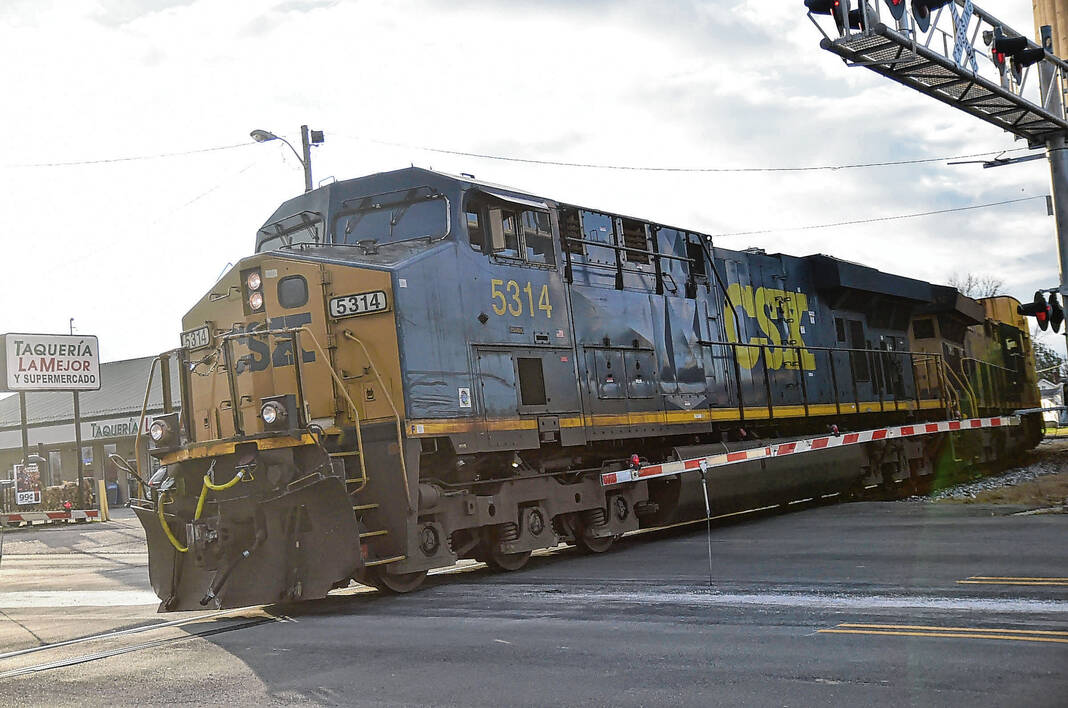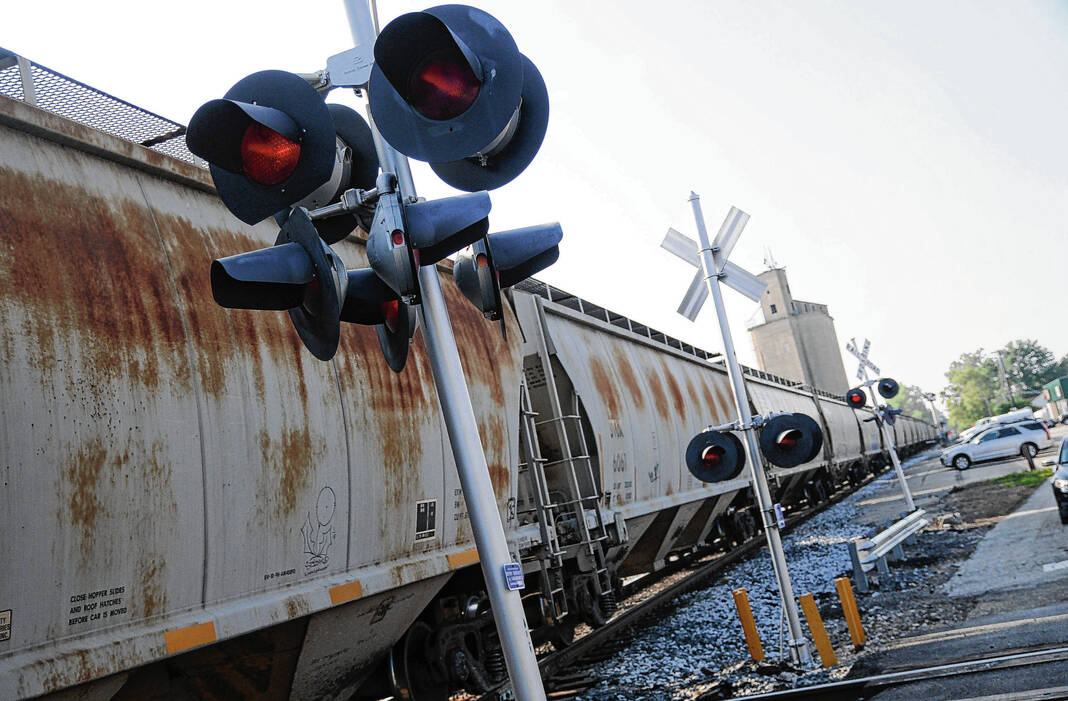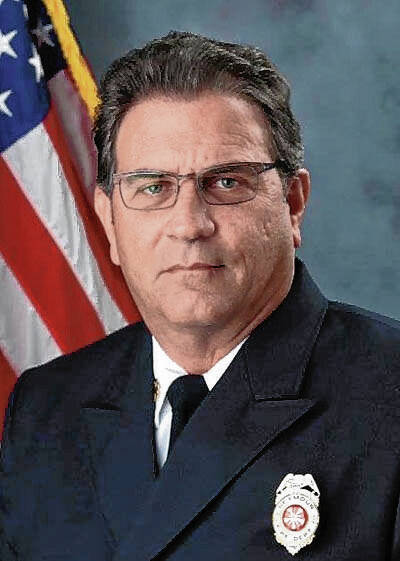Widely known as the Crossroads of Southern Indiana, Seymour is a mecca of many railroad crossings.
But with recent events, railroad safety has been a topic that has not derailed.
The issue of rail accidents and how to respond to them has received national attention in recent weeks after dozens of freight train cars derailed in an Ohio town earlier this month, including 10 cars that were carrying hazardous materials, The Associated Press reported.
The derailment Feb. 3 in East Palestine, Ohio, prompted evacuations when toxic chemicals were burned after being released from five derailed tanker rail cars carrying vinyl chloride that were in danger of exploding, according to The Associated Press.
The derailment and its aftermath have left residents there questioning the potential health effects even as authorities maintained they were doing their best to protect people.
Dozens of trains, carrying different materials and chemicals that are considered hazardous, pass through Seymour each day. Although plans of action and mitigation in the event of a train derailment are in place, it’s impossible to determine when an accident will occur.
The Federal Railroad Administration, which enforces rail safety regulations, including the transportation of hazardous materials, cannot provide a list of hazardous material shipments due to security concerns. It also does not monitor train movements or types of cargo transported by private rail companies in real time.
“Organizations with whom railroads may share information on hazmat shipments and commodity flows include first-response organizations and emergency planning organizations, such as police and fire departments, as well as Local Emergency Planning Committees and Tribal Emergency Planning Committees,” said William Wong with the office of public affairs at the Federal Railroad Administration.
Seymour Fire Chief Brad Lucas said he is trained to identify certain hazardous materials that have traveled through.
“It is mostly flammable and acid-type materials that travel through town. Our department is trained to identify different hazardous substances by using a guidebook,” Lucas said.
Every other year, the Seymour Fire Department and Louisville & Indiana Railroad conduct a tabletop training session to identify hazardous materials by certain placards or identification numbers on the train cars.
Tabletop exercises are discussion-based sessions where team members meet to discuss their roles during an emergency and their responses to a particular situation.
From there, the fire department can reference a specific guidebook to determine the next steps needed for the safety of those in the area. This includes determining the cause for evacuation, shelter-in-place or administering first aid if needed.
“We have a really good relationship with Louisville & Indiana Railroad and are always helpful during the training sessions,” Lucas said.
The railroad offers free training to first responders in many counties on how to respond to a range of scenarios, including training that is applicable toward what happened in East Palestine, Ohio, said railroad President John Goldman.
The training, which generally takes place each year, aims to help first responders become familiar with the train cars and equipment as well as setting up command centers, issuing first aid and addressing any other health issues, Goldman said.
“It helps prepare (first responders) for nonemergency events and to help them assist us with large-scale events, such as what happened in Ohio,” Goldman said.
The fire department is trained to identify a hazardous substance and assess the situation, but as far as safely cleaning up the accident, resources are slim.
“We are trained to get people out of the situation if need be, but unfortunately, we don’t have the resources or the manpower to physically deal with the hazard ourselves,” Lucas said.” In the event of a train derailment, it would be an all-hands-on-deck situation.”
L&I Railroad officials notified the city in 2018 that longer, heavier and faster CSX trains would begin traveling through Seymour on their rail line beginning near the end of that year.
In 2018, Goldman said most of those CSX trains would be carrying automotive items but predicted more boxcars carrying general merchandise would be added.
Louisville & Indiana Railroad and CSX Transportation won approval in April 2015 from the federal Surface Transportation Board to use L&I’s 106-mile mainline between Louisville and Indianapolis jointly and to upgrade it from jointed steel rails to continuous welded ones to allow high-speed rail traffic.
The new rails would allow heavier and faster trains to move through Columbus, Seymour and other cities along the rail line. The plan called for CSX to invest $70 million to $90 million in improvements and to shift an estimated 13 to 15 trains per day to the L&I line in addition to the L&I trains.
Currently, L&I does not generally provide advance notice to local first responders that hazardous materials will be hauled through the county, officials said.
Instead, local officials said they can quickly contact the railroad to find out exactly what is on board the train in the event of an incident.
Duane Davis, director of the Jackson County Emergency Management Agency, already established a plan with the Jackson County Local Emergency Planning Committee that meets state and federal requirements of hazardous chemical releases.
This allows local officials and emergency responders to know the plan of action or response of a chemical spillage at a facility that deals in hazardous chemicals. This information would help first responders prepare for emergency notification if the situation needed evacuation or other safety measures.
“In the event of such an emergency, I would contact the incident commander to provide any support or resources and facilitate any phone calls needed to put out the correct emergency notification,” Davis said. “By law, it is the spiller’s responsibility for cleanup, in this case, the railroad company.”
Davis said these situations are time-dependent, and measures of isolating the area, correct emergency notification and immediate first aid would be vital if a train derailment was to occur. He also mentioned many of the crossings were recently upgraded to accommodate frequent travel and faster speeds, but a main concern of his is the community.
“I would say our biggest hazard is people trying to beat a train. The safety of the community is a main focal point, and warning signs can help with that telling people to stop and wait for the train to pass,” Davis said.
While first responders and local officials established the training and plans to stay prepared, the predictability of these disasters is almost impossible.
“You never really know when or how a situation like this will happen, and I can’t imagine the stress the responders in Ohio had to undergo during that accident,” Lucas said.
Reporter Andy East from The Republic contributed to this story.






